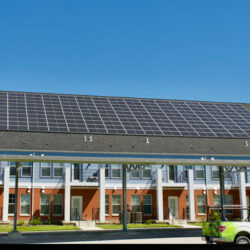
Going green has become a significant trend in recent years as individuals and businesses alike seek to reduce their environmental impact. While there are clear ecological benefits, many people wonder whether the costs associated with adopting green practices are justified. In this comprehensive analysis, we’ll explore the various aspects of going green and evaluate whether it’s worth the investment.
The Initial Costs
One of the most common concerns about going green is the initial financial investment. Upgrading to energy-efficient appliances, implementing renewable energy sources, and switching to eco-friendly products can be expensive. However, it’s essential to view these expenditures as long-term investments. Energy-efficient appliances, for instance, can result in substantial savings on electricity bills over time, often paying for themselves.
Long-Term Savings
The key to understanding the financial benefits of going green is recognizing the long-term savings. Energy-efficient appliances reduce energy consumption, lowering utility bills. Insulating and weatherizing your home can lead to significant savings on heating and cooling costs. Furthermore, green technologies like solar panels can eventually generate excess energy, which can be sold back to the grid, further reducing costs.
Environmental Benefits
Beyond financial considerations, going green offers undeniable environmental advantages. Reduced carbon emissions, water conservation, and less dependence on fossil fuels all contribute to a healthier planet. These benefits, while not directly financial, are priceless when considering the long-term costs of climate change and environmental degradation.
Going green is more than just a trend; it’s a commitment to making choices that benefit the environment. The environmental advantages of adopting eco-friendly practices and products are extensive and play a vital role in creating a sustainable future. Here, we delve deeper into the environmental benefits of going green:
- Reduced Carbon Emissions: One of the most significant environmental benefits of going green is the reduction of carbon emissions. By using energy-efficient appliances, renewable energy sources, and choosing eco-friendly transportation options, individuals and businesses can significantly lower their carbon footprint. This is crucial for combatting climate change and reducing global warming.
- Less Resource Depletion: Green living encourages the responsible use of natural resources. It emphasizes reducing, reusing, and recycling to minimize waste. Additionally, opting for sustainable materials and products helps decrease the demand for finite resources, such as fossil fuels and minerals.
- Water Conservation: Going green often involves water-saving practices, which are vital in regions facing water scarcity. Low-flow fixtures, rainwater harvesting, and water-efficient landscaping can significantly reduce water consumption.
- Preservation of Ecosystems: Choosing sustainable and organic farming practices, as well as supporting wildlife-friendly landscaping, can help protect local ecosystems. Pesticide reduction and biodiversity conservation are essential components of going green.
- Air Quality Improvement: Green practices also extend to indoor air quality. Using eco-friendly building materials and non-toxic household products leads to better indoor air quality, reducing health problems and the release of harmful chemicals into the atmosphere.
- Reduction of Landfill Waste: By minimizing waste through recycling, composting, and reducing single-use items, we can significantly reduce the amount of waste that ends up in landfills. Landfills produce harmful methane gas, a potent greenhouse gas.
- Lower Energy Consumption: Energy-efficient practices not only save money but also reduce the need for energy production, which often relies on fossil fuels. Decreased energy consumption leads to lower greenhouse gas emissions and less strain on power plants.
- Support for Renewable Energy: Investing in renewable energy sources like solar, wind, and hydroelectric power promotes the transition away from fossil fuels. This reduces greenhouse gas emissions and dependence on finite energy resources.
- Promotion of Sustainable Transportation: Opting for public transportation, carpooling, biking, or walking instead of driving alone in gas-guzzling vehicles reduces air pollution and traffic congestion. Electric vehicles (EVs) are another green option, especially when charged using renewable energy.
- Conservation of Natural Habitats: By choosing products and materials derived from sustainable sources, we help protect natural habitats. Unsustainable logging, mining, and fishing can lead to the destruction of ecosystems, but responsible practices mitigate these effects.
- Mitigation of Pollution: Green living involves using fewer chemicals and pollutants in daily life. This, in turn, reduces the pollution of air, water, and soil, leading to cleaner environments.
- Long-Term Sustainability: Ultimately, the overarching environmental benefit of going green is the promotion of long-term sustainability. By making choices that support ecological balance, we ensure that future generations will have access to a healthy and vibrant planet.
In conclusion, the environmental benefits of going green are far-reaching, positively impacting the planet’s health and ensuring a better future for all living creatures. These practices are essential for combating climate change, protecting natural resources, and preserving the world’s ecosystems.
Health Benefits
Going green can also have health benefits. Using eco-friendly cleaning products reduces exposure to harmful chemicals, and improving indoor air quality by using non-toxic materials can lead to fewer respiratory problems and allergies. These health benefits translate into potential healthcare cost savings.
Going green not only benefits the environment but also has numerous positive effects on personal health. By making eco-friendly choices in your daily life, you can enjoy improved well-being and health. Here’s a closer look at the health benefits of going green:
- Reduced Exposure to Harmful Chemicals: Many conventional cleaning products, pesticides, and personal care items contain toxic chemicals that can have adverse health effects. Choosing natural and eco-friendly alternatives reduces exposure to these harmful substances, which may lead to allergies, respiratory problems, and skin irritations.
- Improved Air Quality: Green living often involves maintaining proper ventilation and using non-toxic building materials. This results in better indoor air quality, reducing the risk of respiratory issues and allergic reactions.
- Lower Risk of Chronic Illnesses: The adoption of organic food and products can lower the intake of pesticides and synthetic additives. Organic food, in particular, is associated with a lower risk of chronic illnesses such as cancer, heart disease, and diabetes.
- Better Mental Health: Spending time in natural surroundings, such as parks and green spaces, has been linked to improved mental well-being. It can reduce stress, anxiety, and depression while boosting overall mood.
- Healthier Diet Choices: Going green often involves consuming more fruits and vegetables, which are rich in essential vitamins, minerals, and antioxidants. This leads to a more balanced and nutritious diet, supporting better health.
- Active Lifestyle: Choosing eco-friendly transportation options like walking, biking, or using public transit can encourage a more active lifestyle. Physical activity is essential for maintaining a healthy weight and reducing the risk of obesity-related health issues.
- Reduced Exposure to Heavy Metals: Sustainable seafood options often have lower levels of heavy metals like mercury, which can be harmful when consumed in excess.
- Enhanced Sleep Quality: Improved air quality and reduced exposure to artificial light from electronic devices can result in better sleep quality, contributing to overall health.
- Reduced Stress: Connecting with nature through activities such as gardening, hiking, or simply spending time outdoors can reduce stress levels and promote relaxation.
- Chemical-Free Personal Care: Choosing natural and organic personal care products minimizes contact with harmful chemicals that can be absorbed through the skin, such as parabens and phthalates.
- Weight Management: Eating organic and locally sourced foods may encourage portion control and healthier eating habits, aiding in weight management and reducing the risk of obesity.
- Lower Healthcare Costs: By taking proactive steps to maintain good health through green living practices, individuals may experience fewer health problems, reducing the need for medical treatments and decreasing healthcare costs.
Incorporating green practices into your lifestyle not only contributes to environmental sustainability but also offers numerous health benefits. By reducing exposure to harmful chemicals, improving air and water quality, and embracing a healthier and more active way of life, individuals can enjoy a higher quality of life and a reduced risk of chronic health issues.
Eco-Friendly Products
Many consumers are willing to pay a premium for eco-friendly products, from organic foods to sustainable clothing. As the demand for these products increases, more affordable and accessible green options become available. In some cases, it may even be cheaper to choose the eco-friendly option.
Eco-friendly products play a crucial role in adopting a sustainable lifestyle and contributing to a greener, healthier planet. Here, we delve deeper into the concept of eco-friendly products and their various aspects:
- Defining Eco-Friendly Products: Eco-friendly products, also known as green or sustainable products, are designed and manufactured with an emphasis on minimizing their negative impact on the environment. They are created to be more energy-efficient, resource-efficient, and less harmful to ecosystems.
- Materials and Ingredients: Eco-friendly products often use sustainable and renewable materials. For example, bamboo, cork, and recycled plastics are commonly used in eco-friendly products. When it comes to personal care and cleaning products, they avoid harmful chemicals and utilize natural, biodegradable ingredients.
- Energy Efficiency: Many eco-friendly appliances and gadgets are designed to be energy-efficient. They consume less electricity, helping to reduce carbon emissions and lower energy bills.
- Durability and Longevity: One core principle of eco-friendly products is durability. They are built to last longer, reducing the need for frequent replacements, which can contribute to landfill waste. This aspect also saves consumers money in the long run.
- Biodegradability: Eco-friendly products are often biodegradable or compostable, meaning they can break down naturally without leaving harmful residues in the environment. This is especially crucial for products like disposable tableware.
- Reduced Packaging: Eco-friendly products are packaged with minimal or recyclable materials. Manufacturers aim to minimize waste and excess packaging that often ends up in landfills.
- Certifications and Labels: Look for certifications and labels like “Energy Star,” “USDA Organic,” and “Fair Trade” on products. These labels indicate that the product meets specific environmental or ethical standards.
- Reduced Carbon Footprint: Many eco-friendly products are manufactured with a lower carbon footprint. Companies often implement practices like local sourcing to reduce transportation emissions.
- Ethical Labor Practices: In addition to being eco-friendly, many sustainable products are also produced under ethical labor conditions, ensuring fair wages and safe working environments for employees.
- Support for Sustainable Practices: Purchasing eco-friendly products encourages businesses to adopt sustainable practices. When consumers choose these products, they signal a demand for environmentally responsible manufacturing and sourcing.
- Cost Considerations: While eco-friendly products may sometimes have a higher upfront cost, they often provide long-term cost savings. For example, energy-efficient appliances reduce utility bills, and durable, reusable products save money in the long run.
- Consumer Awareness: The growing popularity of eco-friendly products reflects a shift in consumer awareness. More people are recognizing the importance of making responsible choices for the environment and their health.
- Promoting a Sustainable Lifestyle: By incorporating eco-friendly products into daily life, individuals can contribute to a sustainable lifestyle. From reusable grocery bags to energy-efficient lighting, each choice plays a part in reducing one’s ecological footprint.
- Educational Resources: Many organizations and websites provide information about eco-friendly products and sustainable living, helping consumers make informed choices.
Eco-friendly products are not just a trend but a necessity in today’s world. They offer numerous benefits, from reducing environmental impact to supporting ethical labor practices and promoting a more responsible and sustainable way of life. With an increasing array of eco-friendly options available, individuals can make conscious choices that align with their values and contribute to a healthier planet.
Government Incentives
Governments around the world offer incentives for adopting green practices. These can include tax credits for renewable energy installations, rebates for energy-efficient appliances, and subsidies for electric vehicles. Taking advantage of these incentives can significantly offset the costs of going green.
Government incentives have become a crucial driver for individuals, businesses, and communities to adopt eco-friendly practices and invest in sustainability. Here’s a deeper dive into the various forms of government incentives and their significance:
- Financial Incentives: Many governments offer financial incentives to encourage green practices. This can include tax credits, rebates, and grants for energy-efficient upgrades, renewable energy installations, and sustainable construction. For individuals, this translates to savings on investments in solar panels, insulation, electric vehicles, and more.
- Subsidies: Governments may provide subsidies for industries and technologies that align with sustainability goals. For example, the agricultural sector may receive subsidies for adopting organic farming practices or implementing water-saving technologies. These subsidies help lower the cost of sustainable production.
- Regulatory Benefits: Governments often introduce regulations and policies that incentivize eco-friendly practices. For instance, building codes may require energy-efficient designs, or emissions limits can encourage industries to reduce their carbon footprint. Non-compliance can result in fines or restrictions, making it financially advantageous to adhere to sustainable regulations.
- Grants for Research and Innovation: Government grants support research and innovation in sustainability. These grants fund projects aimed at finding eco-friendly solutions to various challenges, from clean energy technologies to waste reduction strategies. By fostering innovation, governments promote a transition to greener practices.
- Renewable Energy Incentives: Many countries provide incentives for the adoption of renewable energy sources like solar, wind, and hydropower. These incentives can take the form of tax credits for installing solar panels or feed-in tariffs that pay individuals and businesses for excess energy they feed back into the grid.
- Low-Interest Loans: Some governments offer low-interest loans to individuals and businesses looking to invest in green technologies. These loans make it more affordable to finance sustainable projects, encouraging a shift toward eco-friendly practices.
- Public Transportation Initiatives: To reduce carbon emissions, governments often invest in public transportation infrastructure. They may offer subsidies to make public transit more affordable or provide incentives for using electric vehicles and carpooling.
- Eco-Friendly Tax Credits: Tax credits can significantly reduce the cost of adopting green technologies. Individuals and businesses may be eligible for credits related to energy-efficient home improvements, electric vehicles, and more.
- Conservation Programs: Governments may establish conservation programs that reward landowners and farmers for protecting natural habitats and practicing sustainable land management. These programs help preserve biodiversity and maintain healthy ecosystems.
- Public Awareness Campaigns: Public awareness and education campaigns funded by governments inform citizens about eco-friendly practices and their benefits. These campaigns encourage people to make sustainable choices in their daily lives.
- Carbon Pricing Initiatives: Some regions have implemented carbon pricing mechanisms like carbon taxes or cap-and-trade systems. These systems provide financial incentives for reducing greenhouse gas emissions and transitioning to cleaner energy sources.
- Waste Management Incentives: Governments may introduce recycling programs, landfill taxes, or extended producer responsibility regulations. These measures encourage individuals and businesses to reduce, reuse, and recycle, thereby minimizing waste and its environmental impact.
- Clean Transportation Initiatives: Governments are promoting clean transportation options, such as electric and hybrid vehicles, through various incentives. These can include tax credits, rebates, and subsidies to make eco-friendly transportation more accessible.
- Research and Development Funding: Governments allocate funds for research and development in environmentally friendly technologies, from alternative fuels to sustainable agriculture. This financial support drives innovation and the development of more efficient, green solutions.
Government incentives are essential tools in accelerating the transition to a sustainable and environmentally conscious society. They help mitigate the financial barriers to adopting green practices and promote the long-term well-being of both the planet and its inhabitants.
Is It Worth It?
Ultimately, the worth of going green depends on your perspective. In the short term, there may be upfront costs to consider, and the financial benefits may take time to materialize. However, the long-term savings, combined with the environmental and health advantages, often make it a wise choice. The key is to approach the process as an investment in a sustainable future.
In conclusion, going green is not just a trendy lifestyle choice; it’s a responsible and forward-thinking approach to living. The costs involved should be viewed as investments in a healthier planet, lower bills, and improved well-being. As green technologies and products continue to evolve and become more affordable, the answer to whether going green is worth it becomes increasingly clear: it’s an investment with both immediate and long-term returns.




 Ordering Info
Ordering Info Customer Service
Customer Service Follow Us
Follow Us Search For Stuff
Search For Stuff Find Us
Find Us Call Us
Call Us Pay Us
Pay Us

hybrid cars are energy efficient compared to diesel or gas powered cars.